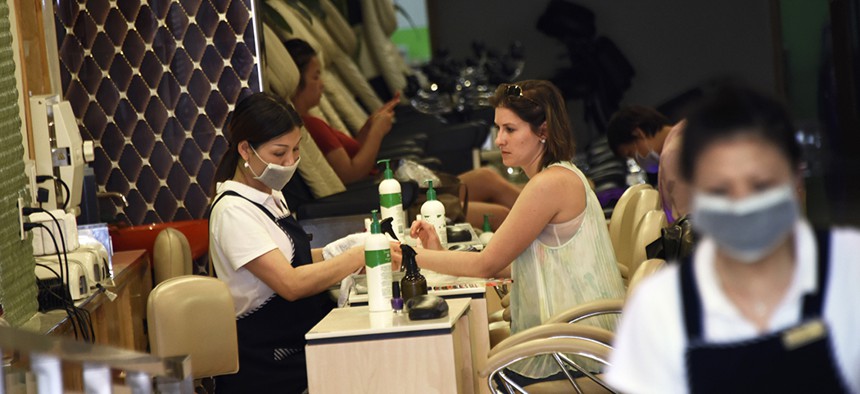Labor Day is a time to celebrate workers and the unions that have helped them get on the path toward joining the middle class by getting better pay and safer working conditions and by stopping retaliation from unscrupulous employers.
It also is a time to remember that organized labor is under attack from the U.S. Supreme Court and the Trump administration and that the fight for an honest day’s pay for an honest day’s work continues.
That’s why we proudly stand with the Restaurant Opportunities Center, the Retail, Wholesale and Department Store Union, Workers United and activist groups like New York Communities for Change, Make the Road New York and others in calling for the immediate end of the tip credit, and for bringing all minimum wage workers up to the full minimum wage.
In other words, one fair wage for all.
At the direction of Gov. Andrew Cuomo, the state Department of Labor held a series of seven hearings statewide this spring and summer on whether to bring all workers in tipped industries – restaurants, car washes, nail salon workers and others – up to the minimum wage, which is now $13/hour in New York City.
Under current regulations employers in those industries can pay tipped employees between $9.80 to $11.05 per hour under a complicated and confusing system based on the type of industry, amount of anticipated tips and the size of the business. In New York City alone, a car wash worker could be paid one of four different sub-minimum wages.
Tips are supposed to make up the difference, but as hundreds of workers testified at those hearings, they often do not. And many workers said they are frequently victims of wage theft by employers or managers who steal part of their tips. Even well-meaning employers can violate the law because of the complexity of the system.
It is a completely broken system that not only creates two tiers of workers, but fuels wage theft, economic insecurity, confusion and, in the hospitality industry, sexual harassment.
The National Employment Law Project reports that poverty rates are higher in states with a tipped minimum wage. NELP found that poverty rates in states with tip credit are about 14.5 percent, compared to 10.8 percent in states that require the full minimum wage for all workers.
The National Organization for Women New York City says the tipped minimum wage results in low annual earnings, rampant sexual harassment, wage theft and exploitation of immigrant workers.
NOW NYC also found that that in New York, restaurant servers, 61 percent of whom are women, experience poverty at more than double the statewide rate, making an annual median income of just $22,000 a year, including tips. Nail salon workers, who often work up to 84 hours a week, make an annual median income of just $21,200. Car wash workers, who are among the poorest workers in New York, take home as little as $125 a week. They often work 60 to 70 hours a week just to make ends meet and are exposed to toxic chemicals.
And the Center for American Progress found that the hospitality industry accounts for the largest source of sexual harassment charges filed by women through the Equal Employment Opportunity Commission. Many of those workers told the Department of Labor that they must put up with unwanted advances or sexual harassment to earn better tips.
That’s why we are calling on the Department of Labor to immediately end this practice before the Sept. 13 primaries. Nationally, the U.S. Department of Labor recovered more than $270 million in back pay for some 240,000 workers in fiscal year 2017.
Next week, a resolution will be introduced in the New York City Council calling for the end of the sub-minimum wage.
It is imperative that the DOL implement one fair wage, so that all minimum wage workers earn the same amount and that any worker who suffers sexual harassment or lives in fear of retaliation can make a livable wage and not be subjected to possible wage theft.
In ordering the hearings, Cuomo said it was an issue of basic fairness.
He was right. In the spirit of Labor Day, New York must end the sub-minimum wage now.
NEXT STORY: How to cool New York City's subway stations


